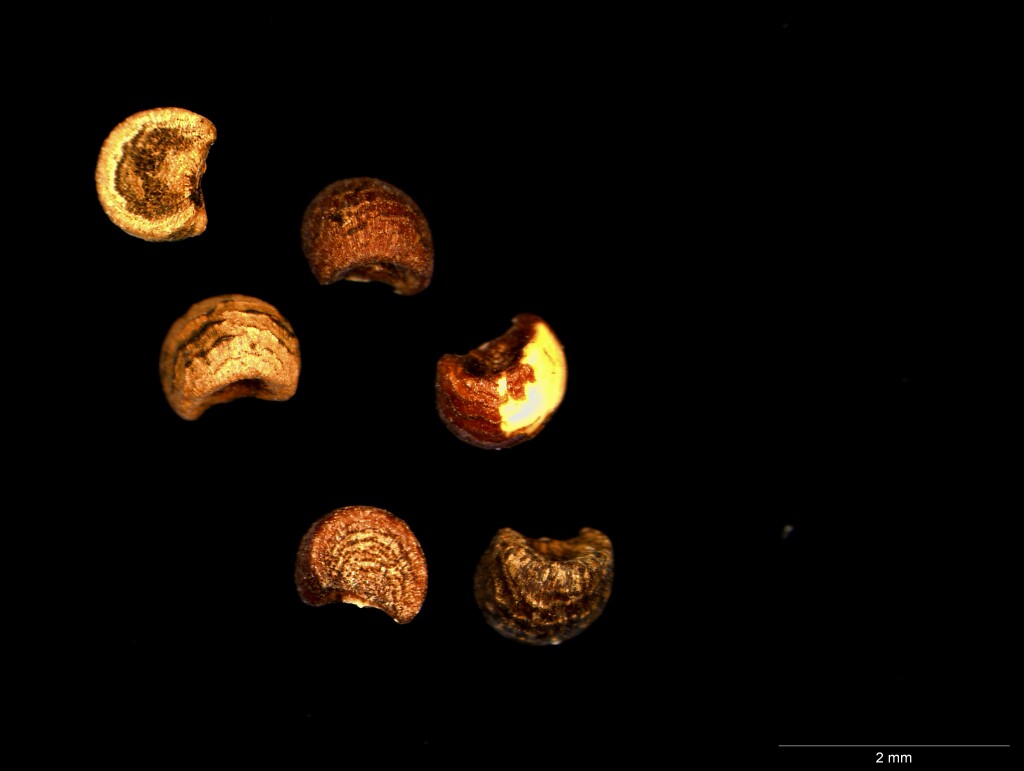Phyllanthus lacunellus
Airy Shaw Sandhill SpurgeMonoecious perennial herb to 30(–60) cm high; branchlets rounded, ribbed, sometimes papillose. Leaves subtending branches not reduced to scales (but lower leaves often deciduous, then a scar and 2 stipules present), normal leaves obovate to obcordate, 5.5–18 mm long, 2.5–7.5 mm wide, apex sometimes shortly mucronate, glabrous; petioles to 1.5 mm long; stipules triangular, to 1.4 mm long, cream to yellow-brown often with a pink centre. Inflorescences with sexes mixed; male flowers 1–2 per axil; pedicels 0.3–1 mm long; sepals 0.5–1.2 mm long, white, pink, or red; disc 0.4–0.8 mm wide; anthers subsessile. Female flowers 1–2 per axil; pedicels at anthesis 0.3–0.8 mm long, in fruit 0.8–1.7 mm long; sepals 0.5–1.6 mm long, white, yellow-brown, or pink; disc 0.5–1 mm wide; styles divided half or more of their length, 0.2–0.6 mm long. Capsule transversely ellipsoid, apically depressed, 1.3–2 mm long, 2.3–3 mm wide; seeds red to red-brown, 1.1–1.5 mm long, rugose and ribbed, deeply pitted on one side. Flowers most of year (depending on rains).
MuM, MSB, RobP. Also NT, SA, Qld, NSW. In Victoria confined to the far north-west, near the Murray River downstream from the Chalka Creek anabranch. Typically occurring on sandy rises, lunettes of lakes etc.
Hunter, J.T.; Bruhl, J.J. (1999). Phyllanthus. In: Walsh, N.G.; Entwisle, T.J., Flora of Victoria Vol. 4, Cornaceae to Asteraceae, pp. 74–78. Inkata Press, Melbourne.
 Spinning
Spinning
